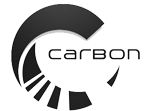There are five main groups which differ in their use of raw material and manufacturing process :
1. Hard carbon brushes
The most important raw materials are carbons like lamp /carbon block coke and with various types of cokes bonded with pitch , the raw materials are processed by mixing, pulverizing , pressed and kilned at temperatures up to 1200º C. The kilning process carbonizes the binder also and a relatively hard carbon is produced with much better polishing qualities than electro graphite & Carbon Graphite grades. Therefore, hard carbon brushes are mostly used on small machines with flush mica which require strongly polishing brushes. The permissible electrical and thermal load for hard carbon brushes is rather low and their elasticity limits their use to machines with peripheral speeds of up to 20 m/sec.
2. Carbon-graphite brushes
Electro graphite is one of the most important raw material, here and is processed like Hard Carbons with binder pitch , pressed and heat-treated similarly to hard carbon at temperatures to meet specific resistivity needs. The principle field of application for carbon graphite brushes is, therefore, intermediate between those of electro graphitic and hard carbon brushes. Their polishing properties are better; their electrical carrying capacity is lower than in the case of electro graphitic brushes. Carbon graphite brushes are also characterized by outstanding commutating abilities as a result of their high resistivity & contact voltage drop. They are used on machines where electro graphitic brushes cannot be used due to their low polishing ability, and where hard carbon brushes are unsuitable because of their lower commutating properties. Carbon graphite brushes with specially designed impregnations for ‘radio interference’ are mainly used on F.H.P. motors with mica undercut and on small thyristor fed DC machines.
3. Resin-bonded brushes
In principle, the raw material is natural crystalline graphite, bonded with resin, which is pressed and heat treated in a special process. The advantage of special graphite brushes is their high contact drop and high resistance with inherent higher anistropy. They also have good oxidation resistance. These properties are very valuable for machines with high commutating requirements. It is to its disadvantage, the high contact resistance causes high electrical loss due to circulating current. This might lead to deterioration of the resin bond. Therefore, the main field of application for special graphite brushes covers all machines with high commutating requirements, but with relatively low brush current density. These are three-phase commutator motors and small machines with mica undercut. Due to their low elasticity, special graphite brushes are normally used only up to 35 m/sec.
4. Electro graphite brushes
The raw materials like petroleum /pitch coke & lamp black are subjected to processes similar to those described under 1 to 3 above and then further heat-treated at temperatures up to 2500ºC. This converts the carbon material into a Crystalline form of synthetic graphite, called Electro graphite, a material having good electrical and thermal conductivity. Its elasticity and refractoriness are improved and its polishing properties are generally lower than hard carbon or graphite brushes. Depending on the composition of the basic materials, brushes having widely variable characteristics can be produced with various specially prepared impregnations . Electro graphite brushes, therefore, cover a wide range from the robust traction brush to very elastic grades having outstanding commutating abilities. Because of all these characteristics, electro graphite grades are found in all classes of service, though they are mainly used on large commutator machines with high electrical, thermal and mechanical requirements.
5. Metal graphite brushes
Raw materials are metal graphite mixtures which are processed on a powder processing technology basis. The metal most frequently used is electrolytic copper. For certain applications also silver, tin, lead and other metal powders are used. The behavior of metal graphite brushes is intermediate between graphite brushes and metal brushes. Depending on the proportion of graphite and metal, either the good frictional qualities of graphite or the high conductivity of metal predominates. Contact and internal resistance are relatively small. From this point of view, this group is the opposite of the special graphite class. Consequently, the main field of application cover all types of machines with high brush current loads, with or without high commutating requirements, such as slip rings and low voltage machines. Owing to their low elasticity, metal graphite brushes can only be used at peripheral speeds up to approximately 30 m/sec.
